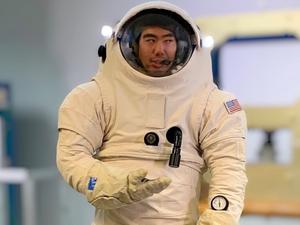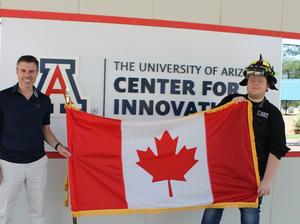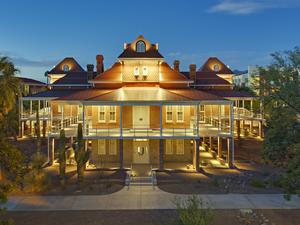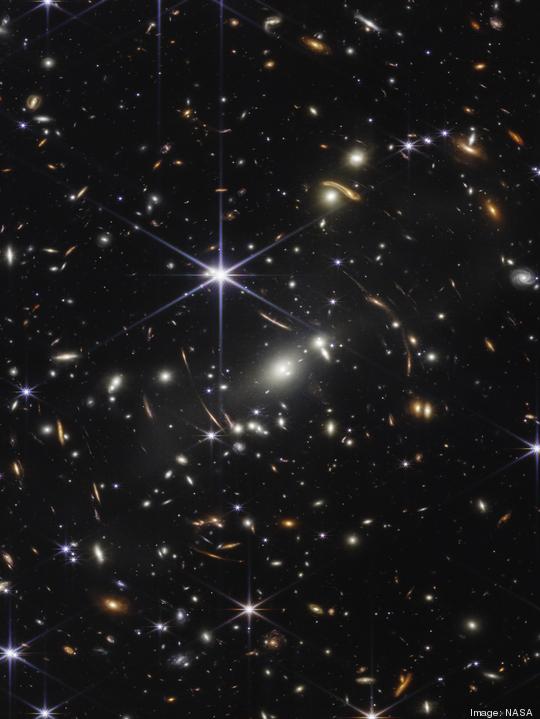
NASA unveiled the first images from its James Webb Space Telescope, thanks in part to scientists at the University of Arizona.
Released to the public on July 12, these images provide the deepest and sharpest infrared image of the distance universe so far, according to NASA.
The telescope's Near-Infrared Camera, or NIRCam, was built by a team at UArizona and Lockheed Martin's Advanced Technology Center. The NIRCam serves as the telescope's short wavelength imager and is led by principal investigator and UArizona Regents Professor of Astronomy Marcia Rieke.
Honeywell also contributed technology to the telescope. One is its Fine Guidance Sensor, allowing the telescope to lock on a star position and stabilize the light beams coming from deep space objects. The other is its Near-Infrared Imager and Slitless Spectrograph, which photographs and gathers spectra from celestial objects.
George Rieke, Marcia's husband and also a Regent's Professor of Astronomy at UArizona's Steward Observatory, serves as science team lead for the Mid-Infrared Instrument, or MIRI, which will observe the universe at longer wavelengths.
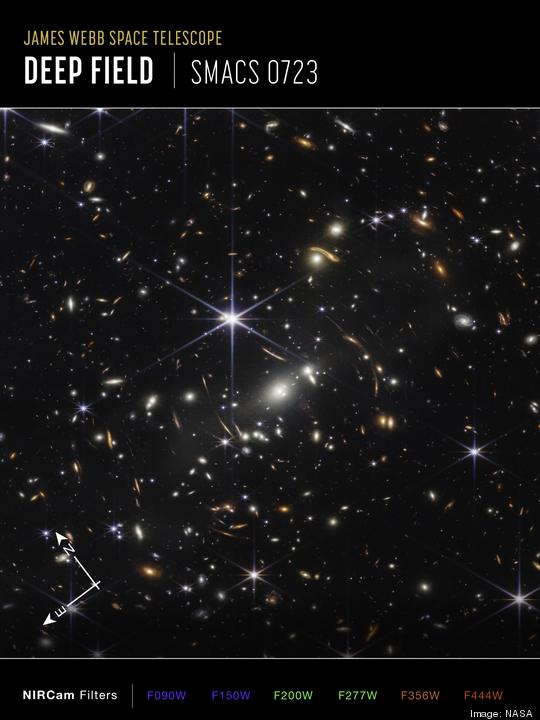
Known as Webb's First Deep Field, thousands of galaxies have appeared in Webb's view for the first time. The galaxy cluster name is SMACS 0723.
Marcia Rieke said she can't wait to investigate how the first galaxies came together to create something like our own Milky Way, and if scientists can find a deep space planet with an Earth-like atmosphere.
Meanwhile George Rieke said he's looking forward to studying quasars, which are supermassive black holes at the center of galaxies that create bright jets of light as they consume the surrounding gas.
"MIRI and all of Webb's other instruments are ushering humanity into new scientific territory and that's super exciting," he said.
The James Webb Space Telescope launched Dec. 25, 2021, on an Ariane 5 rocket from Europe's Spaceport in French Guinana.
The UArizona Flandrau Science Center and Planetarium in Tucson will host a James Webb Space Telescope Image Release Event on Wednesday, July 13, 10 a.m. to 9 p.m., with a lecture by UArizona astronomer and NIRCam team member Kevin Hainline, planetarium shows, and special activities for children and adults.

